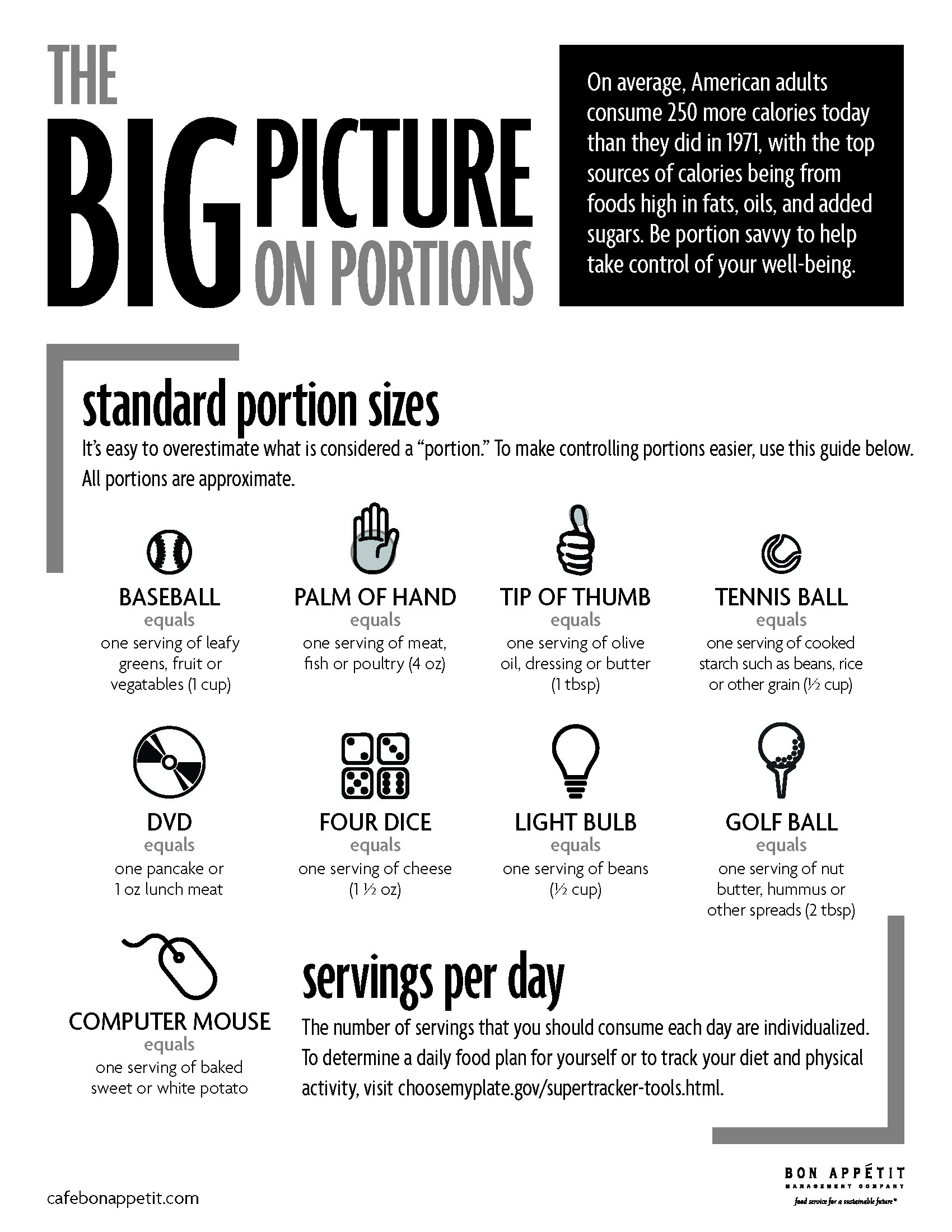In the 1950s an average meal of a cheeseburger, French fries and soda pop would be about 600 calories, slightly under one third of the total calories an average person needs in one day.
If you eat that same meal today, you’re likely to consume more than 1,200 calories in one sitting — over half of your daily needs.

Research shows that portion sizes play a large role in energy balance, and eliminating oversized portions could reduce the calories we eat by 22-29 percent. Because our servings have become so abnormally large, sometimes you may not even realize that you are overeating. Simply reducing portions sizes is a great way to manage your weight without giving up many of the foods you love.
Tips for eating right-sized portions:
- Pick a plate for success: Bigger isn’t always better, especially when it comes to plate size. The larger the plate, the more you will eat.
- Out of sight, out of mind: Serve yourself in the kitchen, and then sit down at a table to eat.
- Ditch the bag: Portion out snacks instead of eating straight from the bag or box.
- Slow down and savor: You’ve probably heard that it takes 20 minutes for your brain to recognize that you are full. Give it that time and savor every bite.
- Focus on the food: Turn off the TV, put away your phone, and get away from your desk. The more distracted you are, the more you will eat.
- Recognize portion size: Use visual cues like the guide below visual guide to help you easily recognize recommended portion sizes without having to measure your food.
- Indulge a little: Healthy eating includes treats too. Enjoy little indulgences, like a small square of dark chocolate or a single scoop of ice cream, rather than avoiding sweets or other treats altogether. Savor these treats, take time to taste them, and don’t feel guilty. Including these foods in your diet in small portions can help keep cravings under control.
Learning to recognize and serve yourself reasonable portion sizes will allow you to enjoy your favorite foods, while also helping you manage your weight. Remember that many of the most filling foods are also nutrient-rich, which not only aids weight management but also promote long-term health. Choose foods packed with fiber, protein, and a little bit of healthy fat to keep you feeling energized on fewer calories.
Proper Portions
In order to provide a frame of reference for food portions, standard serving sizes have been developed by the USDA as part of their Dietary Guidelines for Americans.
To help you understand what a proper portion looks like, it’s helpful to associate portions with common objects like:

The number of serving you eat depends on your personal energy needs. Review the guidelines to learn how to create a healthier lifestyle for yourself and your family.
Portion are part of the formula. Learn how to Get More Nutritional Bang for Your Calorie Buck.